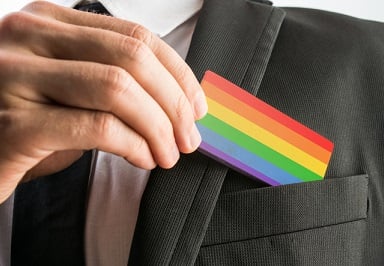Diversity is part of the future of business success – and companies that fail to embrace it will be left behind.
Some are still slow to adapt, in part due to uncertainty about how to support and accommodate different groups – particularly trans-identified staff. That’s why it’s important for HR to understand the issues, and to play a leading role in creating innovative diversity and inclusion (D&I) strategies.
Those strategies can help companies draw diverse talent that might otherwise pass them by, says Jacq Hixson-Vulpe, an education and training specialist at Ontario advocacy organization
The 519 and LGBT Workplace Index coordinator at
Pride At Work Canada.
“By understanding that skills and experience can come in many different forms, and not just a degree from a university, can help bring in viewpoints that many other companies might not be able to access. As well, it is just good basic human kindness and decency that every company should want to display.”
Hixson-Vulpe, the author of The 519’s
Creating Authentic Spaces toolkit, will speak on innovative diversity and inclusion strategies and accommodating and supporting LGBTQ workers at the
HR Leaders Summit in November.
When it comes to companies’ LBGTQ efforts, there’s been a lot of focus on supporting people with diverse sexual orientations - the LGBQ – “but we don’t see as much success with supporting people of diverse gender identities (the T)”, says Hixson-Vulpe, who uses the pronoun they.
“If an organization is meant to the LGBTQ friendly, they should have LGBTQ people on staff who are prepared to openly identify that way. If you look around at an organization and there are no trans people working there, there is a good chance that their hiring practices and overall structure need to be reworked in some ways,” they said.
Trans people are more likely than others to be
unemployed or underemployed – and they’re not helped by recruiters who may have a limited understanding of trans issues, Hixson-Vulpe says.
“If a hiring manager isn’t trained and supported around how to interact with someone who’s name isn’t the same as the one on their diploma or from their previous job, for example, then the decisions will be made to continue not hiring trans people.
“Companies should be open to understanding where there are gaps, and hiring trained professionals to facilitate important conversations about how D&I actually plays out on the ground.”
Beyond just the hiring process, HR should be leading diversity and inclusion efforts – creating employee resources groups, training staff, and reviewing policies, including transition guidelines – and holding their company accountable to high standards, Hixson-Vulpe says.
Hixson-Vulpe also suggests forward-thinking HR professionals will learn more about intersectionality, “understanding their employees having multiple identities which they bring to work ... racial identities, gender identities, sexual orientations, different abilities, different backgrounds and these require different types of support in understanding systemic privilege and marginalization”.
Jacq Hixson-Vulpe will speak at the
HR Leaders Summit in November.
Related stories:
Why diversity programs don’t stick
Is HR doing enough to support transgender staff?
Want the latest HR news direct to your inbox? Sign up for HRD Canada's daily newsletter.

